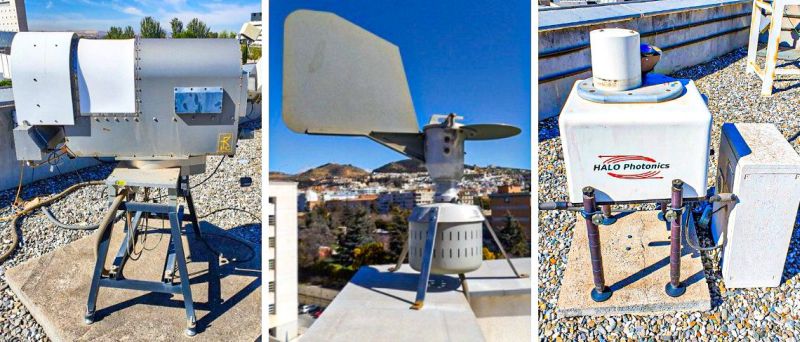
-
Project data:
- Ref. A-RNM-430-UGR20
- Realization: 01/07/2021 a 30/06/2023
- Funding Agency: Junta de Andalucía. Proyectos de I+D+i en el marco del Programa Operativo FEDER Andalucía 2014-2020. Junta de Andalucía
- Principal Investigator: Juan Luis Guerrero Rascado. Juan A. Bravo Aranda
- Researchs: Paloma Cariñanos González, Consuelo Díaz De La Guardia Guerrero, Concepción de Linares Fernández, María José Granados Muñoz, Diego Bermejo Pantaleón, Jesús Abril Gago, Ana Cristina Bugalho Oliveira Rodrigues Costa, Vanda Cristina Pires Salgueiro, Maria Joao Tavares Da Costa, Celia María Miguel Antunes.-
- https://www.ugr.es/~rascado/project_DEM3TRIOS.html
Abstract
Pollen concentrations in the atmosphere constitute a form of biogenic pollution classified as one of the major causes of respiratory diseases in humans, i. e. allergic rhinitis, asthma, and atopic eczema. The incidence of pollen on human health may become even more problematic in forthcoming years as the effects of climate change on the reproductive phenology of plants are intensifying. Previous studies indicate a clear relationship between the diurnal cycle of pollen emission and surface meteorological variables. However, the influence of the vertical distribution of meteorological variables on this cycle has been hardly investigated. There are some studies focused on understanding the dispersion and behavior of short- and long-distance transport of pollen, but obtained results are limited due to the small number of pollen events analyzed, the lack of continuous measurements and limitations in their vertical extension. This edge-cutting project explores the turbulent mixing within the atmospheric boundary layer, which is considered essential in the study of pollen. Turbulent processes govern the exchange rate between the surface and the atmosphere, and can influence the transport of bioaerosol particles emitted from the surface. Turbulent mixing sources include buoyancy production and wind shear production, which are highly variable in time and space. The technology for bioaerosol monitoring currently used in the world dates back to the 1950s and suffers from low time resolution and long delays in data availability. Recent technological advances have made it possible to improve both the lidar technique, used in the characterization of the atmospheric boundary layer and the study of vertical profiles of atmospheric aerosol and cloud properties, and the eddy covariance technique, used to study atmospheric turbulence, opening a wide range of innovative research paths, especially those related to public health, agriculture and national security.
In this proposal, we will focus on the multidisciplinary study of pollen bioaerosol particles from a physical-biological perspective. Our cutting-edge hypothesis is that, although the influence of some meteorological variables of the surface layer is known, atmospheric processes and meteorological variables that cover larger scales can play a determining role, unexplored until now, in surface pollen concentrations: meteorology in height is coupled to the dynamics of pollen dispersion at the surface. The combination of the novel remote sensing techniques (microwave radiometry, Doppler lidar, aerosol lidar and solar photometry) together with the advances in eddy covariance technique can become key tools for an operational monitoring of pollen and the processes that govern its dispersion in the future. The novelty of the proposal lies in demonstrating the influence that meteorological processes at different heights, both at low altitudes (first ten meters from the surface) and at high altitudes (throughout the entire atmospheric boundary layer), have on pollen emitting sources and on pollen levels observed on the surface, which are a health issue for the part of the population sensitive to this type of allergens. Therefore, the general objective of the project is to analyze atmospheric processes with high spatial (both vertical and horizontal) and temporal resolution to investigate the influence that the different sources of turbulence (formed in small and large scale turbulent structures) and the presence of different thermal inversions (of subsidence and radiation) have on pollen levels observed on the surface, in addition to evaluating the vertical dispersion of two of the predominant Mediterranean pollen types as a key to understanding the local and regional transport of these taxa. If our hypothesis is correct, remote sensing techniques could contribute in the near future to the improvement of pollen events prediction systems, including the component of transport monitoring from different source regions, and serve as pollen alert systems in cases of high pollen levels, which will provide health managers with the information necessary to identify risks and implement adequate policies and risk mitigation actions.